This article was medically reviewed by Neal Blitz, DPM, FACFAS. Dr. Neal Blitz is a Podiatrist and Foot & Ankle Surgeon who runs private practices in New York City and in Beverly Hills, California. Dr. Blitz is “The Bunion King®” and is the creator of the Bunionplasty® Procedure (plastic surgery for bunions) which has revolutionized bunion surgery. He has over 17 years of podiatric experience and specializes in minimally invasive foot and ankle surgery. Dr. Blitz received his DPM from the New York College of Podiatric Medicine, then completed a residency focused on Elective & Reconstructive Foot & Ankle Surgery at the Swedish Medical Center, and was awarded an AO Trauma fellowship in Dresden, Germany, focused on trauma and reconstructive techniques. He is board certified in Foot Surgery and Reconstructive Rearfoot & Ankle Surgery and is also a Diplomate of the American Board of Foot & Ankle Surgery and a fellow of the American College of Foot & Ankle Surgeons (FACFAS).
There are 9 references cited in this article, which can be found at the bottom of the page.
This article has been viewed 189,061 times.
Nail fungus, also known as onychomycosis or tinea unguium, is a common condition that can affect either the finger — or toenails, though it is more likely to infect toenails.[1] It often begins as a white or yellow spot under your nail(s) and can cause serious damage to the nail(s) or other infections if left untreated.[2] By identifying the signs and symptoms and treating the condition, you can not only know if you have nail fungus, but also get rid of this potentially unsightly condition.
Steps
Identifying Nail Fungus
-
1Learn the causes. Nail fungus is most often caused by a dermatophyte fungus, but the infection can also stem from yeasts and molds on your nail.[3] The fungi, yeasts, or molds that cause nail fungus can infect you and thrive under the following conditions:
-
2Be aware of your risk factors. Although any person can get nail fungus, certain factors can make you more prone to developing it.[6] Your risk may be at a higher risk because of:[7]
- Age, which can reduce blood flow and slow nail growth
- Gender, especially men with a family history of nail fungus infections
- Location, in particular if you work in a humid or moist environment or if your hands or feet are often wet
- Heavy perspiration
- Clothing choices, such as wearing socks and shoes that don’t allow proper ventilation and/ or absorb perspiration
- Proximity to someone who has nail fungus, especially if you live with an infected person[8]
- Having athlete’s foot
- Having a minor skin or nail injury or skin condition like psoriasis
- Having diabetes, circulation problems, or a weakened immune system
Advertisement -
3Recognize the symptoms. Nail infections exhibit some typical symptoms that can help you quickly know if you have the condition. Nails infected with fungi, yeast, or molds may be:[9]
- Thickened
- White or discolored, with or without speckles of white in the nail bed
- Brittle, crumbly, or ragged
- Distorted in shape
- Dull and lacking any shine
- Dark in color, which is a result of debris build-up under the nail
- Nail fungus can also cause the nail to separate from the nail bed
-
4Observe changes to your nail. Pay close attention to your nails to notice if any changes occur to them over time. This can help you more easily know if you have nail fungus and get timely treatment.[10]
- Notice white and yellow patches or streaks under and on the sides of the nail, which is one of the first signs you may notice.[11]
- Look for changes to the texture of your nail such as brittleness, thickening, or loss of lustre.[12]
- Remove nail polish at least once a week so that you can check your nails. Polish may make it difficult to effectively recognize nail fungus symptoms.
-
5Notice pain. More advanced cases of nail fungus may cause pain and possibly inflammation to your nails and surrounding tissues.[13] Thickened nails may accompany pain, making it easier to know if you have a nail fungus as opposed to an ingrown toenail or another condition.[14] You may experience pain while walking or wearing shoes if you have an infected toenail.
- Feel for pain directly on your nail or around it. You may want to gently press on your nail to see if you have any pain.
- Make sure the pain isn’t a result of too tight shoes, which can cause pain in your toenails.
-
6Detect odor. Dead or dying tissues build up under your nail(s) or nail separation can cause your nails to give off an odor.[15] Detecting any unusual odor may help you figure out if you have nail fungus and get proper treatment.[16]
- Smell for a particularly foul odor that may resemble something dead or decaying.
-
7See your doctor. If you are exhibiting symptoms of nail fungus and aren’t sure of the cause or self-help measures aren’t working for suspected nail fungus, schedule an appointment with your doctor.[17] Your doctor can examine your toes and possibly run tests to confirm the type of infection you have, which can help her formulate the best treatment for you.[18]
- Tell your doctor how long you’ve had symptoms and explain any pain and odor you may also have.
- Let your doctor examine your nails, which may be the only type of test she needs to confirm nail fungus.[19]
- Your doctor may scrape some debris from under your nail and send it for further testing to determine what is causing your infection.[20]
- Be aware that some conditions like psoriasis can present like fungal infections of the nail.[21]
Treating Nail Fungus
-
1Take oral antifungal medications. Often topical therapies can't fully eradicate fungus and you will need an oral antifungal medication to get rid of the infection. These drugs, including terbinafine (Lamisil) and itraconazole (Sporanox) can help a new, infection-free nail grow, replacing the areas with nail fungus.[22]
-
2
-
3Apply Vicks VapoRub. Some studies have found that rubbing Vicks VapoRub on nail fungus may help treat it.[29] Apply a thin layer of the product every day to help kill nail fungus.[30]
- Use a cotton swab to apply the VapoRub to your nail.[31]
- Put the product on at night and leave it on overnight. Wipe it off in the morning.
- Repeat the process until the infection subsides.
-
4Try herbal remedies. There is some evidence that alternative herbal remedies may help treat nail fungal infections.[32] Two herbal remedies that may kill nail fungus and keep it at bay are:[33]
- Snakeroot extract, which comes from the sunflower family. Apply every third day for one month, twice a week the following month, and once a week for a third month.
- Tea tree oil. Apply twice a day until the fungus disappears.[34]
-
5Use creams and ointments. If you notice white or yellow markings or patches on your nails, apply an over-the-counter or prescription nail cream or ointment. For more severe cases, have your doctor prescribe a medicated cream.[35] This may help nip the infection in the bud before it spreads or gets more serious.[36]
- File off the surface of the nail, soak the affected area in water and dry it before applying the treatment.[37]
- Follow packaging and doctor’s instructions to most effectively kill the infection.
-
6
-
7Consider other procedures. Severe fungal infections may require more invasive treatments. Speak to your doctor about other procedures such as nail removal or laser therapies to help kill your nail fungus.[42]
- Your doctor may want to remove your nail if the fungus is particularly severe. In this case, a new nail may grow back within a year.[43]
- Some studies have shown that laser and light-based therapies can help treat nail fungus, either alone or in conjunction with other medication.[44] Be aware that these therapies may not be covered by insurance and are expensive.[45]
-
8Prevent nail fungus. You can help prevent the spread or re-infection by nail fungus if you take prophylactic steps to minimize risk of the condition. Adopting the following habits can help minimize your risk for nail fungus:[46]
- Keep hands and feet clean and nails short and dry
- Wear absorbent socks
- Wear shoes that promote ventilation
- Get rid of old shoes
- Apply antifungal spray or powder inside of shoes
- Avoid picking skin around the nails
- Wear shoes in public spaces
- Remove nail polish and artificial nails
- Wash your hands and feet after touching an infected nail
- Clean your shower[47]
References
- ↑ http://www.mayoclinic.org/diseases-conditions/nail-fungus/basics/definition/con-20019319
- ↑ http://www.mayoclinic.org/diseases-conditions/nail-fungus/basics/definition/con-20019319
- ↑ http://www.mayoclinic.org/diseases-conditions/nail-fungus/basics/definition/con-20019319
- ↑ http://www.mayoclinic.org/diseases-conditions/nail-fungus/basics/definition/con-20019319
- ↑ Neal Blitz, DPM, FACFAS. Board Certified Podiatrist. Expert Interview. 22 April 2020.
- ↑ https://www.mayoclinic.org/diseases-conditions/nail-fungus/symptoms-causes/syc-20353294
- ↑ https://www.mayoclinic.org/diseases-conditions/nail-fungus/symptoms-causes/syc-20353294
- ↑ Neal Blitz, DPM, FACFAS. Board Certified Podiatrist. Expert Interview. 22 April 2020.
- ↑ https://www.mayoclinic.org/diseases-conditions/nail-fungus/symptoms-causes/syc-20353294
- ↑ https://www.mayoclinic.org/diseases-conditions/nail-fungus/symptoms-causes/syc-20353294
- ↑ https://www.nlm.nih.gov/medlineplus/ency/article/001330.htm
- ↑ https://www.nlm.nih.gov/medlineplus/ency/article/001330.htm
- ↑ http://www.mayoclinic.org/diseases-conditions/nail-fungus/basics/definition/con-20019319
- ↑ http://www.mayoclinic.org/diseases-conditions/nail-fungus/basics/definition/con-20019319
- ↑ https://www.mayoclinic.org/diseases-conditions/nail-fungus/symptoms-causes/syc-20353294
- ↑ https://www.mayoclinic.org/diseases-conditions/nail-fungus/symptoms-causes/syc-20353294
- ↑ https://www.mayoclinic.org/diseases-conditions/nail-fungus/symptoms-causes/syc-20353294
- ↑ https://www.mayoclinic.org/diseases-conditions/nail-fungus/symptoms-causes/syc-20353294
- ↑ http://www.mayoclinic.org/diseases-conditions/nail-fungus/basics/tests-diagnosis/con-20019319
- ↑ http://www.mayoclinic.org/diseases-conditions/nail-fungus/basics/tests-diagnosis/con-20019319
- ↑ http://www.mayoclinic.org/diseases-conditions/nail-fungus/basics/tests-diagnosis/con-20019319
- ↑ http://www.mayoclinic.org/diseases-conditions/nail-fungus/basics/treatment/con-20019319
- ↑ http://www.mayoclinic.org/diseases-conditions/nail-fungus/basics/treatment/con-20019319
- ↑ http://www.mayoclinic.org/diseases-conditions/nail-fungus/basics/treatment/con-20019319
- ↑ https://www.mayoclinic.org/diseases-conditions/nail-fungus/diagnosis-treatment/drc-20353300
- ↑ https://www.mayoclinic.org/diseases-conditions/nail-fungus/diagnosis-treatment/drc-20353300
- ↑ https://www.mayoclinic.org/diseases-conditions/nail-fungus/diagnosis-treatment/drc-20353300
- ↑ https://www.mayoclinic.org/diseases-conditions/nail-fungus/diagnosis-treatment/drc-20353300
- ↑ https://www.mayoclinic.org/diseases-conditions/nail-fungus/diagnosis-treatment/drc-20353300
- ↑ https://www.mayoclinic.org/diseases-conditions/nail-fungus/diagnosis-treatment/drc-20353300
- ↑ https://www.mayoclinic.org/diseases-conditions/nail-fungus/diagnosis-treatment/drc-20353300
- ↑ http://www.mayoclinic.org/diseases-conditions/nail-fungus/basics/alternative-medicine/con-20019319
- ↑ http://www.mayoclinic.org/diseases-conditions/nail-fungus/basics/alternative-medicine/con-20019319
- ↑ http://www.mayoclinic.org/diseases-conditions/nail-fungus/basics/alternative-medicine/con-20019319
- ↑ http://www.mayoclinic.org/diseases-conditions/nail-fungus/basics/treatment/con-20019319
- ↑ http://www.mayoclinic.org/diseases-conditions/nail-fungus/basics/alternative-medicine/con-20019319
- ↑ https://www.mayoclinic.org/diseases-conditions/nail-fungus/diagnosis-treatment/drc-20353300
- ↑ https://www.mayoclinic.org/diseases-conditions/nail-fungus/diagnosis-treatment/drc-20353300
- ↑ https://www.mayoclinic.org/diseases-conditions/nail-fungus/diagnosis-treatment/drc-20353300
- ↑ https://www.mayoclinic.org/diseases-conditions/nail-fungus/diagnosis-treatment/drc-20353300
- ↑ https://www.mayoclinic.org/diseases-conditions/nail-fungus/diagnosis-treatment/drc-20353300
- ↑ http://www.mayoclinic.org/diseases-conditions/nail-fungus/basics/treatment/con-20019319
- ↑ http://www.mayoclinic.org/diseases-conditions/nail-fungus/basics/treatment/con-20019319
- ↑ http://www.mayoclinic.org/diseases-conditions/nail-fungus/basics/treatment/con-20019319
- ↑ http://www.mayoclinic.org/diseases-conditions/nail-fungus/basics/treatment/con-20019319
- ↑ https://www.mayoclinic.org/diseases-conditions/nail-fungus/symptoms-causes/syc-20353294
- ↑ Neal Blitz, DPM, FACFAS. Board Certified Podiatrist. Expert Interview. 22 April 2020.
About This Article
To know if you have nail fungus, look for thick, brittle, or misshapen nails. They might be discolored or have white and yellow streaks under and around them. Nails looking dull and dark can also be from a fungal infection. The tissue around your nails might be inflamed and painful. Try pressing gently on your nails to see if they hurt. If they’re infected with a fungus, they may also give off an unusual odor. If you think you have nail fungus, take an over-the-counter antifungal medication or visit your doctor. For more tips from our Medical co-author, including how to treat nail fungus at home, read on.
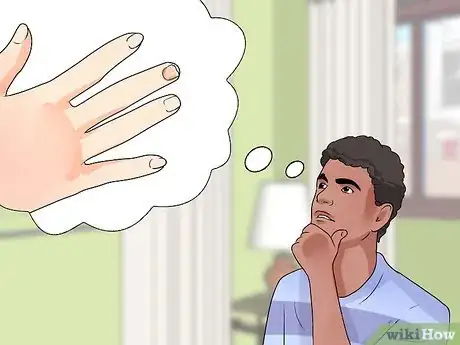

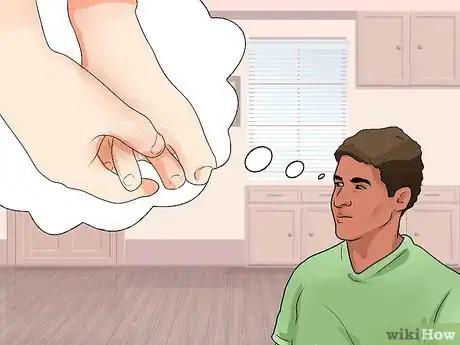
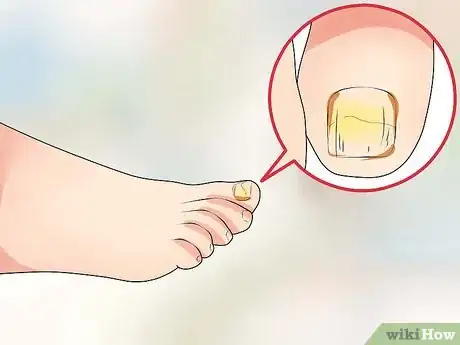
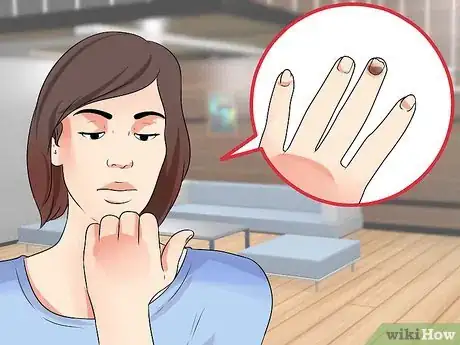
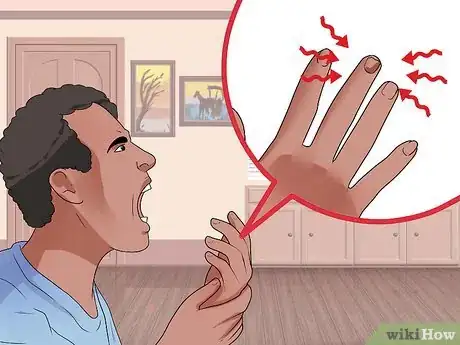
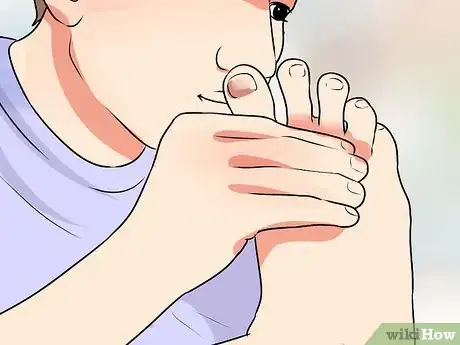
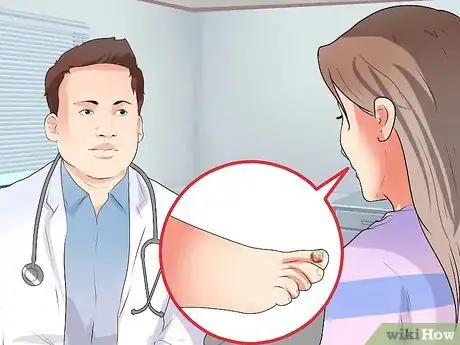
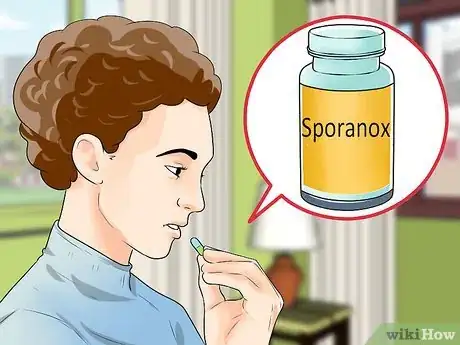
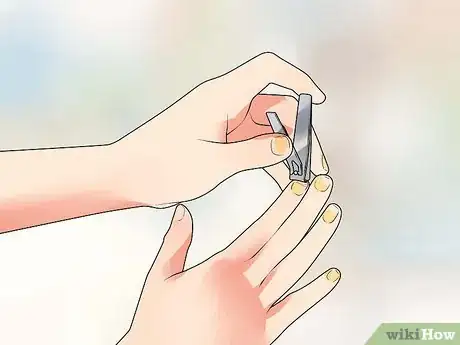
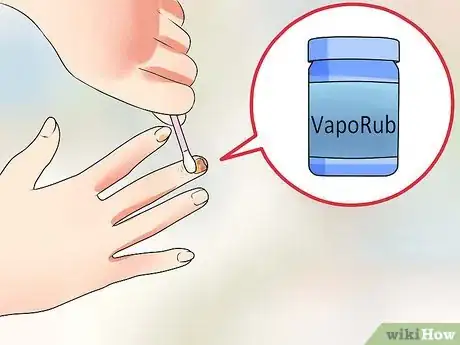
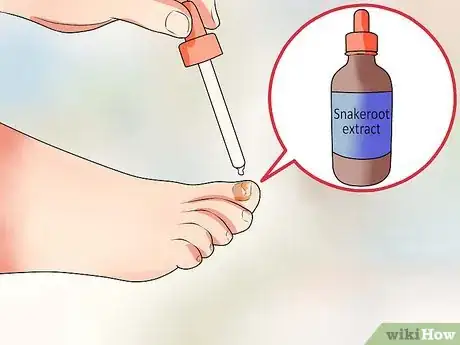
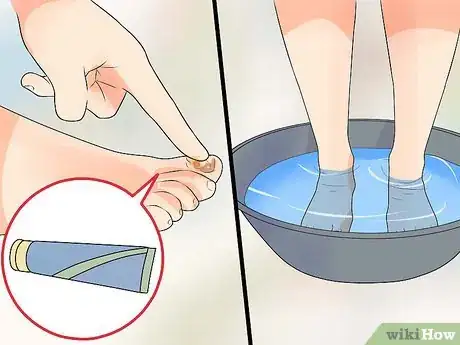
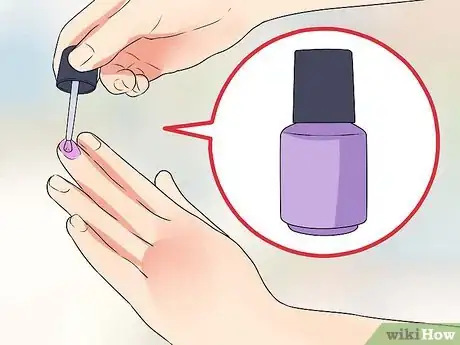
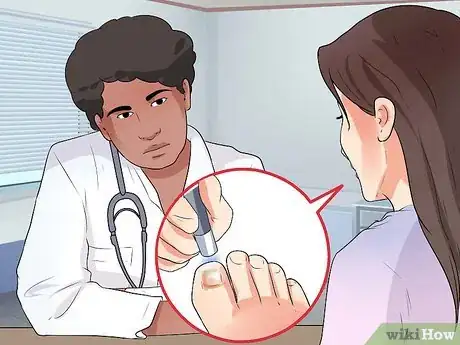
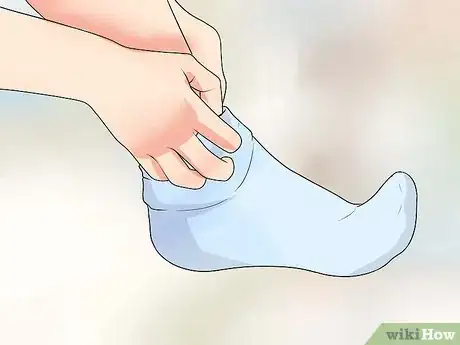

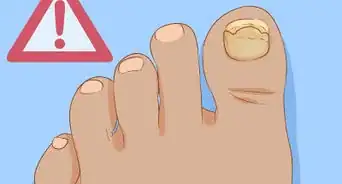
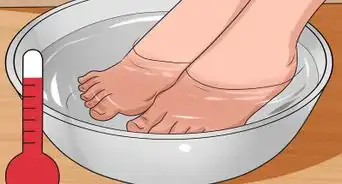
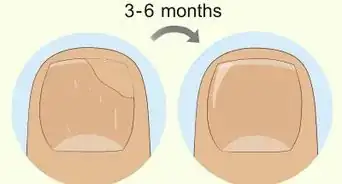
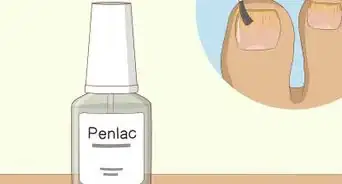
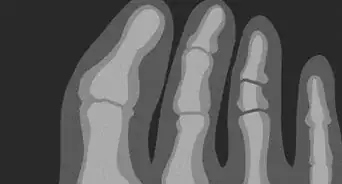
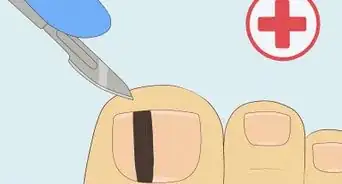
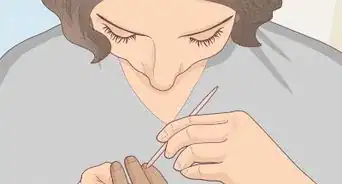
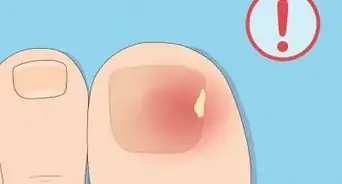
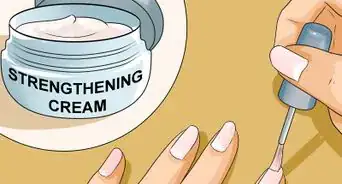
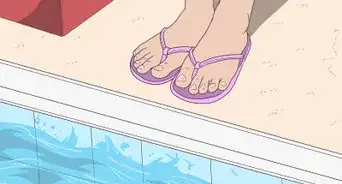










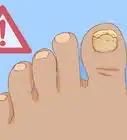

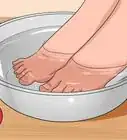



































Medical Disclaimer
The content of this article is not intended to be a substitute for professional medical advice, examination, diagnosis, or treatment. You should always contact your doctor or other qualified healthcare professional before starting, changing, or stopping any kind of health treatment.
Read More...